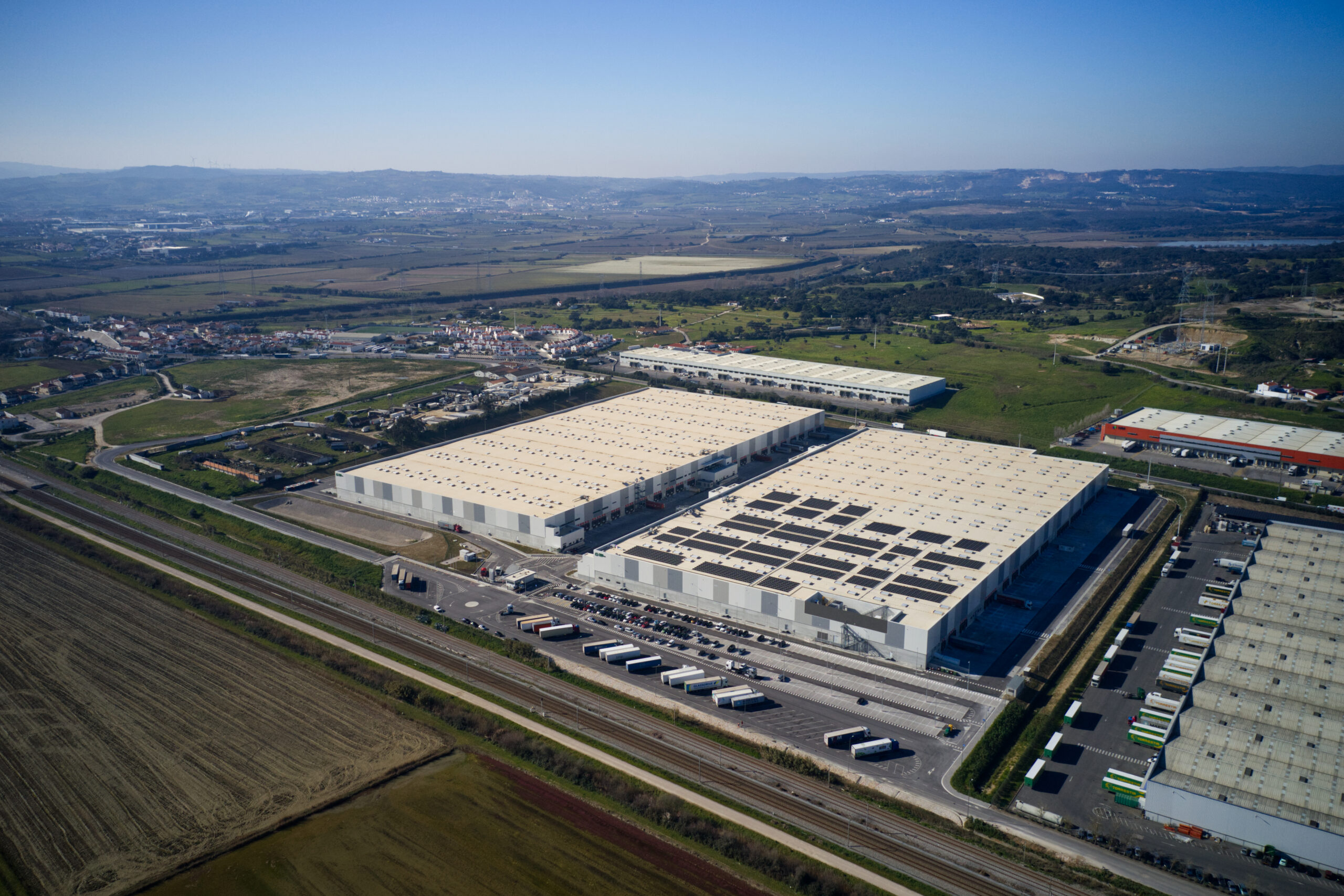Aquila Capital delivers logistics park in Azambuja

- Green Logistics by Aquila Capital has rented out both of its first warehouse buildings in Portugal
- The construction works at the Rainha Green Logistics Park in Azambuja have been assured by GSE Group
- This new complex, built at one of Portugal’s main logistics hubs, will be BREEAM certified and follows strict energy efficiency and sustainability standards
The Rainha Green Logistics Park logistics complex, located in Azambuja, has been formally delivered to its first tenant. The complex is the first investment in Portugal made by Green Logistics by Aquila Capital, a sub-brand of Aquila Capital, and is part of the Aquila Capital Southern European Logistics Fund.
The Rainha Green Logistics Park is located in one of the country’s logistics epicentres, 40 km north of Lisbon. It is just 8 km from access to the A1 and A10 motorways and close to the Vila Nova da Rainha railway station.
This two-building logistics complex, for which construction works were carried out by GSE – a construction company specialised in the development of industrial and logistics projects that also collaborates with Green Logistics by Aquila Capital projects in other countries – is set over a total area of 178,000 m². It has been built to meet the most demanding efficiency and sustainability criteria to ensure the reduction of carbon dioxide emissions, essential to obtain BREEAM certification, a gold standard in the area of sustainability worldwide.
The new complex, now fully handed over to its tenant, incorporates sustainable features that prioritise environmental responsibility. During the construction phase, 132,000 cubic metres of excavated soil was reused for earthworks. Building materials covered by environmental product declarations were also used.
The project incorporates a water retention basin, which promotes the natural drainage of rainwater, without the need for connection to the public network.
The project is also equipped with chargers for electric vehicles and a bicycle park. Photovoltaic panels have been installed on the roof for self-consumption.
In addition, the complex houses the largest single negative cold store in Portugal. With a volume of approximately 8,000 m², it is designed to minimise thermal loads and boost energy efficiency.
The urbanisation works developed under the project and handed over to the Azambuja municipality include a car park with capacity for 343 light vehicles and 51 heavy vehicles, an extension of the existing access road, a new access road and a direct pedestrian access to the Vila Nova da Rainha railway station. The project also ceded to the municipality an adjacent 10-hectare plot of land and contributed towards the construction of one of the two future roundabouts to be built on the EN3, by Infraestruturas de Portugal.
This logistics complex and its associated urbanisation works have been funded by an investment of around 100 million euros.
During the construction of this project, which has been classified as of public interest by the municipality of Azambuja, more than 300 jobs were created. Now the project is fully operational, it is expected that a further 350 direct jobs will be created.
“The delivery of these new buildings represents a very important milestone for Green Logistics by Aquila Capital and consolidates the first of many green logistics projects in this country. This is a reference project in the area of sustainable logistics, with a great concern for environmental sustainability and the territory, and we couldn’t have started in a better way in Portugal”, says Jens Hoeper, Head Investment Management Logistics at Aquila Capital.
Ramón Lázaro, Commercial Director of GSE Spain and Portugal, says: “We are extremely grateful for the trust that Green Logistics by Aquila Capital has placed in us. This is our first project in Portugal, specifically in the Lisbon catchment area, so this is a new milestone for our company. I would also like to point out that both companies share the same vision of the importance of ensuring both the sustainability of the project and its integration into the landscape.”










